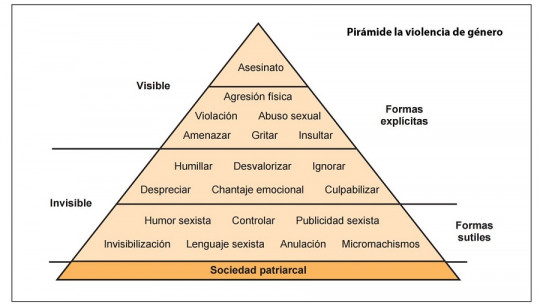Although in recent years cultural awareness of the problems linked to gender violence has increased greatly, we must not forget that until a few years ago, this was a phenomenon that was practically not talked about, because it was very normalized.
That is why today there is a tension between the concern generated by this type of dynamics of violence, on the one hand, and the relative ignorance about them at a social level, on the other. In other words, most people are clear that it is important to combat gender violence, but they do not know how to do it, or what characteristics this problem has on a psychological and social level.
Due to this, we currently find ourselves in a moment in which there are more and more psychology and social science professionals who decide to train in intervention in gender violence, and who offer a specialized vision in the face of a problem to which many Sometimes they act inappropriately or try to apply generic solutions that do not adapt well to the reality of the victims. If you are interested in this topic, keep reading, because here we will review several of the main key ideas for intervene appropriately in the face of gender violence at the individual, collective, and social level
The keys to improving intervention against gender violence
Here you will find key ideas that help intervene in the reality of gender violence, leaving preconceived ideas behind. These can be applied in areas such as education, the creation of protocols against gender violence in companies, psychological therapy, the presentation of news in the media, social intervention in abused women, and more.
1. Identify the stereotypes and stigmas linked to gender roles
Gender violence has its reason for being the dynamics of oppression that arise from gender roles, which originally appear from the sexual division of labor ; Many of these are so integrated into our way of thinking that it is difficult for us to realize that they have given rise to stigmas based on sexism, expectations about what a man and a woman should be, and stereotypes about preferences, tastes and the opinions that people should have because of their gender. Knowing how to recognize these types of ideas and explain why they are problematic is essential to advance the fight against gender violence, because they put anyone who deviates from these norms in a vulnerable situation.
2. Look not only at physical violence, but also at power dynamics
Assume that gender violence is reflected only in physical abuse or murders motivated by sexism, transphobia or homophobia is having an overly simplistic view of the problem These criminal acts are possible because there are power dynamics consolidated for centuries and transmitted from generation to generation, and that play against women and men who deviate from gender roles.
3. Emphasize prevention
For every case of gender violence that is identified as such by the public administration and gives rise to a specific intervention program by professionals, there are many others that go undetected.
That’s why, both to protect the greatest number of people possible and to make efficient use of the victim protection resources available to society (both in the public and private spheres), it is important to give great importance to prevention programs. Furthermore, these should not focus solely on the education of the little ones; We must not forget that one of the most unprotected segments of the population are older women.
4. Apply cognitive restructuring strategies to internalized sexist beliefs
If gender violence is a problem with a great capacity to sneak into every nook and cranny of society, it is because it creates the necessary circumstances for even many victims to internalize the idea that this is “normal.” Even victims who go to psychotherapy after having suffered this violence usually present a certain ambivalence about it, going so far as to blame themselves for what happened. Given this, Cognitive-behavioral psychological therapy offers very useful resources such as cognitive restructuring, through which the psychologist helps the person detect those dysfunctional beliefs about themselves, and change them for others that question gender roles and the attitude of submission and self-punishment that they can lead to. ease.
5. Focus on social reintegration and not on revenge against the aggressors
Intervention on people who have participated in acts of gender violence is another facet to consider. In this case, we must keep in mind that the objective is not to take revenge on these people through punishments that generate suffering simply because of the moralizing burden that this produces; The goal is to do everything possible to facilitate social reintegration in a way that these subjects do not pose a danger to the most vulnerable people That is, this is a task to be carried out within the framework of prevention programs.

6. Do not underestimate the damage that gender violence can cause in men
The fact that some men cannot be victims of gender violence due to their privileged position in power dynamics does not mean that all are free from that danger. Gender roles put a lot of pressure on hundreds of millions of men who have trouble fitting into the concept of what a man should be, whether because of sexual or gender identity, or because of their gender expression, because of their ability limited to bring income to the home, etc.
7. Consider generational differences in the normalization of gender violence
Different generations have different ways of experiencing and perceiving gender violence. For example, the experiences of women educated in the context of the constant sexualization of the female body through social networks and the media are not the same as those of women educated in a cultural context that stigmatized sex outside. of marriage.
8. Not understanding rape as a fundamentally sexual act
Rape is, generally, an act of humiliation and confirmation of inequality in terms of power; Therefore, the consequences it leaves on the victims go far beyond the sexual, and affect the very core of their self-concept and self-esteem
9. Focus not on the victim’s willpower, but on their access to supportive material resources
The intervention to help victims of gender violence should not be aimed at fueling their “will” to overcome what happens to them, since this implies ignoring their access to material resources such as laws that protect them, shelters for abused women, the facilities to attend individualized psychotherapy or group psychotherapy, etc.









